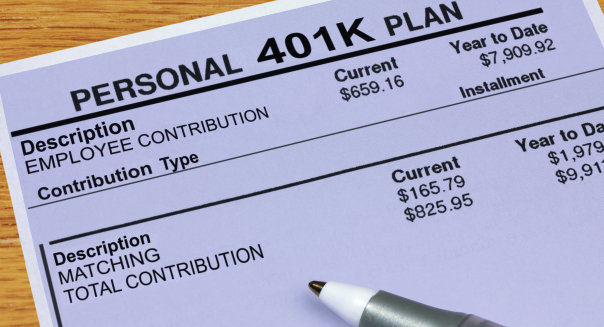
The Supreme Court recently heard arguments in a case about 401(k) retirement plans. Tibble v. Edison International raises questions about an employer’s duty to offer low-cost options in a 401(k). While the decision in the case is several months away, it brings into focus an important issue for those saving for retirement.
To help employees assess their workplace retirement plan, here are seven signs that your 401(k) is less than stellar:
1. No Employer Match
The best 401(k) plans offer matching contributions. Paid by the employer, these contributions match a portion of the money employees contribute to their 401(k). For those plans that offer an employer match, a typical program matches 50 cents of every dollar contributed by the employee, up to a maximum of 6 percent of the employee’s compensation.
2. No Roth 401(k)
While extensive media coverage has popularized the Roth individual retirement account, some employers also offer a Roth 401(k). While the two are similar, there are some key differences. A Roth 401(k)’s maximum contribution is the same as a regular 401(k) ($18,000 in 2015), which is much higher than a Roth IRA contribution limit ($5,500 in 2015). In addition, your income can’t disqualify you from a Roth 401(k) as it can from a Roth IRA.
One benefit of a Roth 401(k) is that it enables employees to save more toward retirement. While the contribution limit is the same as a regular 401(k), the Roth account grows tax free. As a result, you won’t have to share some of your retirement account with the IRS when you retire.
3. No Index Fund Options
The lack of index fund investment options is a clear sign that a 401(k) is second rate. Passive investing with index funds beat most actively managed funds over the long term, according to this Vanguard study. Index funds generally are less expensive than actively managed funds. Further, picking actively managed funds requires significant analysis that most individual investors would rather avoid.
4. Expensive Index Fund Options
While index funds are generally an inexpensive way to invest, there are some exceptions. One ought not assume that all index funds are sound investment options. Rydex, for example, offers an S&P 500 (^GPSC) index fund that charges 1.57 percent of assets under management. These fees rival many actively managed funds and are a far cry from the 0.20 percent or less fees found with many similar index funds.
5. Expensive Target Date Retirement Funds
Target date retirement funds are an easy way to invest. TDR funds create an asset allocation plan based on your the anticipated retirement date and adjust the allocation as you near retirement. Vanguard offers several low-cost TDR fund options. Not all mutual fund companies, however, offer low-cost options. In fact, some 401(k) plans use target date funds with hefty fees. While low-cost funds can have expense ratios of about 20 basis points or less, more expensive options can cost 100 basis points or more.
6. Expensive Actively Managed Fund
While index funds should be a part of every 401(k) plan, there is still a place for well-managed, low-cost actively managed funds. Unfortunately, many retirement plans are saddled with funds that cost a small fortune. As a general rule of thumb, look for actively managed funds that cost less than 100 basis points. The best actively managed funds, in my opinion, have expense ratios in the 60 to 70 basis point range.
7. Administrative Fees
Last but not least, a 401(k) that charges its participants an administrative fee is a clear sign employees are getting a raw deal. This is typically the result of an employer unwilling to foot the bill for its own retirement plan. These are best avoided if possible, particularly given that there are plenty of great IRA options that don’t charge comparable fees.
If your 401(k) plan is less than stellar, consider letting your HR department know how you feel. Here’s a guide from the Boglehead forum with tips on how to approach your employer about an expensive 401(k) plan. While changes to your plan won’t happen overnight, there are steps you can take to make the best of a bad 401(k).
•Do you know how a tax refund can boost your credit score
•Everything You Need to Know About Taxes and Social Security
•5 Easy Ways to Improve Your Credit Score Fast


Leave a Reply